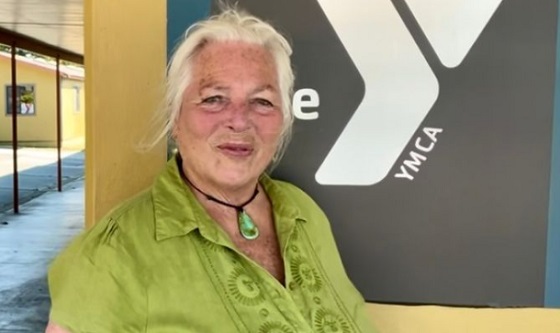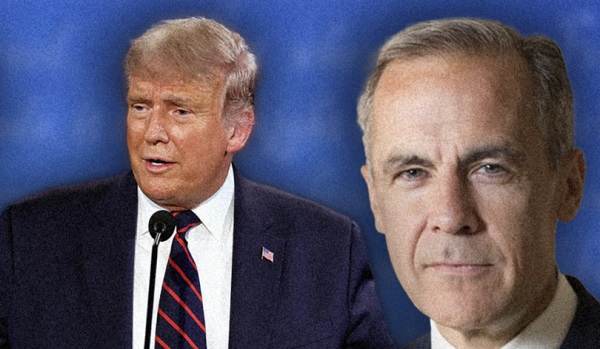Alberta
Albertans continue to pay for government debt—despite budget surpluses

From the Fraser Institute
By Tegan Hill
” due to the amount of debt accumulated, and higher interest rates, Albertans will actually see government debt interest costs increase and reach $687 per Albertan by 2025/26 “
Thanks in large part to a windfall in resource revenue, the Alberta government has been running budget surpluses since 2021/22. Yet at the same time, as budget season approaches, Albertans are paying more and more for the cost of government debt.
Prior to the recent string of surpluses, during a period of relatively low resource revenue, Alberta incurred nearly uninterrupted deficits from 2008/09 to 2020/21. A deficit is simply when the government spends more than it collects in revenue in a given year—and it leads to debt accumulation.
Indeed, Alberta went from a net financial asset position of $35.0 billion in 2007/08 to a net debt position of $59.5 billion in 2020/21. In other words, the province’s finances deteriorated by nearly $95 billion.
Of course, the burden of government debt ultimately falls on Alberta families, today and in the future, because governments must pay interest on their debt—and that interest ultimately is raised from Albertans through taxes. As the government accumulated more and more debt, debt interest costs increased from $61 per Albertan in 2007/08 to a projected $672 per Albertan in 2023/24. Servicing the debt also diverts resources away from services such as health care and education.
Unfortunately, debt interest costs don’t just disappear when you run surpluses, even with the Alberta government using a share of these surpluses to pay down debt. Instead, due to the amount of debt accumulated, and higher interest rates, Albertans will actually see government debt interest costs increase and reach $687 per Albertan by 2025/26.
This is why it’s so important for governments to practice fiscal prudence, in good times and bad. Rather than increasing spending during the good times (i.e. periods of relatively high resource revenue) as successive Alberta governments have done in the past, then running deficits when relatively high resource revenue inevitably declines, the Smith government should restrain spending.
How? For starters, the government can limit the amount of resource revenue included in the budget using a rainy-day account based on the previous Alberta Sustainability Fund (ASF), which was established in 2003 to “stabilize” a specific amount of resource revenue for the budget, thus limiting the amount of money available for annual spending. The idea was simple; save some resource revenue during good times to ensure a stable amount of resource revenue for the budget during bad times.
Unfortunately, the previous ASF was based in statutory law, which meant its rules were easily changed and the government discarded the fund entirely in 2013. The Smith government should instead establish the specific amount of resource revenue for the budget as a “constitutional rule,” which would make it more difficult to change in the future.
Government debt comes with big costs for Albertans—and those costs don’t simply disappear when the province runs a surplus. For true fiscal stability, the government needs a fundamentally new approach. The upcoming budget is a good place to start.
Author:
Alberta
Alberta uncorks new rules for liquor and cannabis

Alberta’s government is supporting liquor producers by enabling them to own, operate and sell their own products on large format bikes or “party bikes.”
Albertans out for a spin on a party bike or tavern tour will soon be able to sip locally made beers and spirits. Alberta’s government is updating the rules to give small liquor producers the green light to serve their own products on party bikes, removing an outdated barrier that had prevented local producers from advertising their own brands.
This is one of several red tape reduction changes to the Gaming, Liquor and Cannabis Regulation (GLCR) aimed at making life easier for small businesses and expanding responsible choices for consumers.
“We are proud that these amendments not only cut red tape in the retail segment of the liquor marketplace, but also directly open more opportunities for small manufacturers to grow their businesses.”
More freedom to grow: Liquor and cannabis reforms
In addition to the changes to party bikes, Alberta is making it easier for liquor retailers to set up shop in underused commercial space. Businesses that own or lease large buildings can now carve out a separate liquor store within their space, so long as it has its own entrance and full floor-to-ceiling walls separating it from other retail operations.
Alberta’s government is also rolling out a long-awaited change for cannabis producers: federally licensed cultivators and processors will now be able to apply for a retail licence to sell their products directly from the same property, commonly known as “farm-gate” sales. This move aligns Alberta with other provinces and gives consumers more access to homegrown cannabis products, while supporting licensed growers.
These targeted reforms are part of Alberta’s broader push to cut red tape, reduce regulatory burden, and promote a more competitive marketplace across the province.
Quick facts
- Alberta’s retail liquor industry is robust, with more than 35,000 products available across more than 1,600 retail stores
- Larger companies with other retail stores, operate multiple retail stores that have a liquor store on site, but in a separate building.
- There are 752 licenced cannabis retail stores in Alberta.
- There are 2,356 licensed cannabis products for sale in the province.
- All cannabis retailers must be licensed by AGLC.
- Licensed producers are regulated by Health Canada.
Alberta
Alberta government records $8.3 billion surplus—but the good times may soon end

From the Fraser Institute
By Tegan Hill
According to last week’s fiscal update, the Smith government recorded a $8.3 billion surplus in 2024/25—$8 billion more than what the government projected in its original 2024 budget. But the good times won’t last forever.
Due largely to population growth, personal income tax revenue exceeded budget projections by $500 million. Business tax revenue exceeded budget expectations by $1.1 billion. And critically, thanks to relatively strong oil prices, resource revenue (e.g. oil and gas royalties) saw a $4.7 billion jump.
The large budget surplus is good news, particularly as it will be used to pay down government debt (which taxpayers must ultimately finance) and to invest for the future. But again, the good times could soon be over.
Recall, the Alberta government incurred a $17.0 billion budget deficit just a few years ago in 2020/21. And it wasn’t only due to COVID—until the recent string of surpluses, the government ran deficits almost every year since 2008/09, racking up significant amounts of debt, which still largely persists today. As a result, provincial government debt interest payments cost each Albertan $658 in 2024/25. Moreover, in February’s budget, the Smith government projected more deficits over the next three years.
Generally, Alberta’s fiscal fortunes follow the price of oil. Over the past decade, for example, resource revenue has been as low as $2.8 billion in 2015/16, while oil prices slumped to $US45.00 per barrel, and as high as $25.2 billion in 2022/23, when oil prices jumped to $US89.69 per barrel.
Put simply, resource revenue volatility fuels Alberta’s boom-and-bust cycle. In 2025/26, the West Texas Intermediate oil price will be a projected $US68.00 per barrel with projected resource revenue falling by $4.9 billion year-over-year.
But oil prices don’t need to dictate Alberta’s fiscal fortune. Indeed, if the Smith government restrains its spending, it can avoid deficits even when resource revenues fall.
There are plenty of ways to rein in spending. For instance, the government spends billions of dollars in subsidies (a.k.a. corporate welfare) to select industries and businesses in Alberta every year despite a significant body of research that shows these subsidies fail to generate widespread economic benefit. Eliminating these subsidies is a clear first step to deliver significant savings.
The budget surplus is undoubtedly positive for Albertans, but the good times could soon come to an end. To avoid deficits and debt accumulation moving forward, the Smith government should rein in spending.
-

 Crime2 days ago
Crime2 days agoBryan Kohberger avoids death penalty in brutal killing of four Idaho students
-

 Business2 days ago
Business2 days agoWhy it’s time to repeal the oil tanker ban on B.C.’s north coast
-

 Energy2 days ago
Energy2 days agoIf Canada Wants to be the World’s Energy Partner, We Need to Act Like It
-

 Business2 days ago
Business2 days agoLatest shakedown attempt by Canada Post underscores need for privatization
-

 Alberta2 days ago
Alberta2 days agoPierre Poilievre – Per Capita, Hardisty, Alberta Is the Most Important Little Town In Canada
-

 MxM News2 days ago
MxM News2 days agoUPenn strips Lia Thomas of women’s swimming titles after Title IX investigation
-

 Alberta2 days ago
Alberta2 days agoAlberta Provincial Police – New chief of Independent Agency Police Service
-

 International1 day ago
International1 day agoWoman wins settlement after YMCA banned her for complaining about man in girls’ locker room








